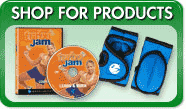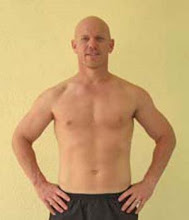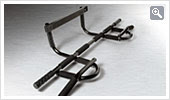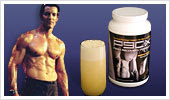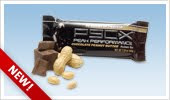The average American eats approximately 1,500 pounds of food every year. Of that, 160 pounds are primarily sugar. Of course, sugar is delicious, and I know I'm the happier for its existence, but of all the things we consume, it has the least nutritive value. In fact, except for the energy in its calories, there's not much to recommend about sugar. It's a prime source of empty calories. And for those of us who are trying to lose weight by committing to a healthy diet and an exercise program like 10-Minute Trainer® or Slim in 6®, sugar's the first thing we should start trimming from our diets. But here's the problem, despite our best intentions to remove excess sugar from our diets, the food industry has found more and more devious ways of slipping us the sweet stuff. Whether the food industry calls sugar by another name or adds it to foods we never thought would have needed it, our sweet teeth are constantly being bombarded. Fortunately, with stricter labeling laws, we have a fighting chance at cutting back on sugar.

Why does the food industry want us so full of sugar?
It's basically the same as any other industry. For the oil industry to make more money, it needs us to use more of its product by driving more miles. And the food industry needs us to use more of its products by eating more calories. The problem is that the American food industry is already producing around 3,900 calories per person per day, which is way more than we need. One solution to this surplus is to sell the food cheaply overseas, which the industry does. The other solution is for Americans to eat more calories. And sugar and its corn sweetener brethren are great calorie delivery systems—they pack a huge caloric punch, without causing much satiety or fullness. (Check out Steve Edwards' "Sugar vs. Fat" article, in Related Articles below, for more about why sugar is the world-champion fattener.) Most people would probably stop eating steak after they reached 1,000 calories, because they'd be stuffed, but after drinking 1,000 calories from their Big Gulp cups, they'd still have room for dinner. The other reason the industry pushes sugar so hard is that it's cheap to produce, and the cheaper the calorie, the larger the profit margin.
Sugar in labels—hiding in plain sight
One of the best ways to disguise the amount of sugar in a product is through something the government already requires—printing the information in grams. Most Americans only have the foggiest idea of how much a gram is, because Americans are unaccustomed to the metric system. So when we pick up a can of soda that contains 40 grams of sugar, we pretty much shrug our shoulders and pop the top. And that attitude is all right with the soda industry! But what if the label said that it contained over 10 teaspoons of sugar? If you saw someone ladling 10 teaspoons of sugar into his or her morning coffee, you'd think he or she was crazy, but that's how much people consume in a typical 12-ounce can of soda. In a 64-ounce fountain drink that you'd get at a movie theater or a convenience store, you get over 53 teaspoons of sugar—that's almost 2 cups! Naturally, people would probably think twice if the nutritional information on products were given in measurements that were meaningful to them. But until our heavily food-industry-subsidized government decides to change its policy, it's a metric world, and we just live in it. But we can take note that 4 grams equals 1 teaspoon. So when you check out a food label, divide the grams of sugar by four, and that's how many teaspoons you're consuming.
Sugar, by any other name, would taste just as sweet
Another strategy the sugar pushers use to get us to consume more calories is to rename the offending ingredient. We know to stay away from sugar, but how about molasses, honey, sorghum, corn syrup, high fructose corn syrup, glucose, fructose, lactose, dextrose, sucrose, galactose, maltose, or concentrated juices like grape or apple? Another profit path that the food industry has discovered is that instead of harvesting relatively more expensive sugar cane and beets, the industry produces sweeteners in a laboratory more cheaply and with just as many calories as beet and cane sugars. And with some sweeteners, especially the popular high fructose corn syrup, it is believed that your body will be less likely to reach satiety than with sugar, so you can consume more. Mo' calories, mo' money. Another advantage to these doses of "-oses" is that, aside from the fact that many people won't guess they're just different forms of sugar, they can be spread out in the ingredient list—under what the law requires—so that it won't be as obvious that what you're consuming is pretty much all sugar. When you look at a list of ingredients on a product, the manufacturer is required to list them in order of amount, from highest to lowest. So they can bury a 1/4 cup of fructose, a 1/4 cup of sucrose, a 1/4 cup of dextrose, and a 1/4 cup of corn syrup in the middle of the list. You won't be as likely to notice that when you add them all up, the main ingredient in the product is sugar.
Hide and seek. You're it.

So, if you're like me, you may have sworn off soda, except on special occasions, and turned the candy bowl into an unsalted-almond bowl. No more sugar, no more problems. Except for this problem: The food industry has cleverly snuck its sugars and corn syrups into products we never would have thought contained sugar. It's good for the manufacturer. It jacks up the calorie load, can enhance the product's appearance (high fructose corn syrup gives hamburger buns their golden glow), and can keep our sugar jones simmering at a low boil, in case we ever decide to go back to the real thing. Here are some types of products whose labels could bear more scrutiny.
1 - Spaghetti sauce. A 1/2 cup of store-bought sauce can contain as many as 3 teaspoons of corn syrup or sugar. While some of the naturally occurring sugar in tomatoes and other vegetables will show up on the nutrition label, most of the sugar is added. Look for brands that don't include sugar or its aliases, or make your own from fresh or canned tomatoes.

2 - Ketchup. Ketchup can be 20 percent sugar or more. Not to mention that you'll get 7 percent of your daily sodium allowance in 1 tablespoon. Look for low-salt, no-sugar brands, or make your own using pureed carrots to add flavor and texture to the tomatoes.
3 - Reduced-fat cookies. Most brands of cookies now offer reduced-fat versions of their regular products. Nabisco even offers its own line of low-fat treats, Snackwells. But while you're patting yourself on the back for choosing the low-fat option, check the label. The sneaky food manufacturers did take out the fat, but they replaced it with, you guessed it, sugar. Many times, the reduced-fat cookie is only slightly less caloric than the one you really want to eat. And because there's no fat to make you feel full, you'll be tempted to eat more "guilt-free" cookies. And just because there's less fat, it doesn't mean you'll be less fat. Fat doesn't make you fat. Calories make you fat.

4 - Low-fat salad dressing. Like the cookies, manufacturers have taken the fat out of the dressing, but they've added extra salt and sugar to make up for it. Check the label to make sure you're not replacing heart-healthy olive oil with diabetes-causing sugar—because that's not really a "healthy choice." Your best bet? Make your own vinaigrettes using a small amount of olive oil, a tasty gourmet vinegar or fresh lemon juice, and some fresh herbs.
5 - Bread. Most processed breads, especially white hamburger and hot dog buns, can contain a good bit of sugar or corn syrup. That's what gives them the golden-brown crust. As always, check the ingredient label, and consider getting your bread at a real bakery or a farmers' market—it's the best idea since, well, you know.

6 - Fast food. Needless to say, fast food is generally not good for you. But even if you're staying away from the sodas and the shakes, everything from the burgers to the fries to the salads is a potential place to hide sugar. Check out the ingredients carefully at your favorite restaurant. You may be getting more than you bargained for.







